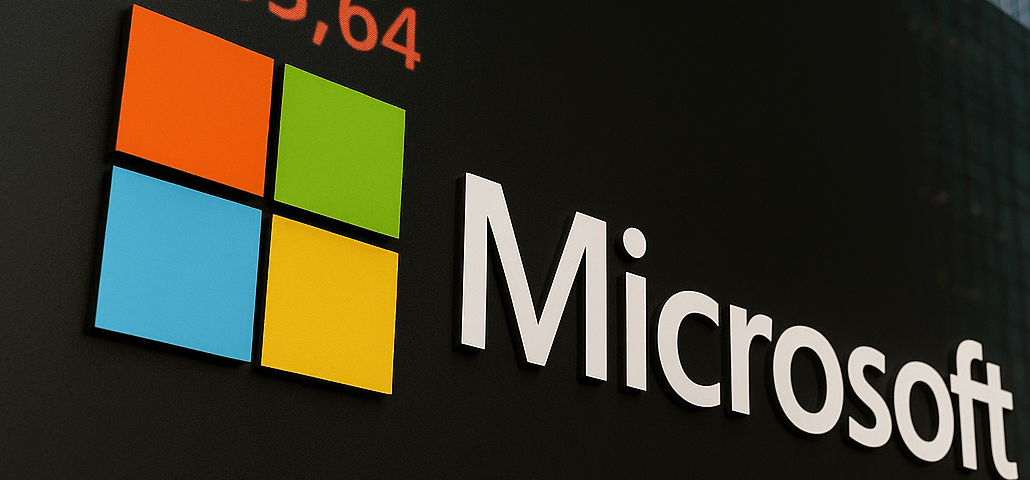The Microsoft cloud surge continues to reshape the tech industry. In Q4 2025, Microsoft shattered expectations with groundbreaking earnings, pushing its market capitalization past $4 trillion and its stock above $550. This exceptional growth, driven by Azure and AI advancements, sets a bold tone for Microsoft’s future.
Microsoft Cloud Surge Leads Strong Q4 Performance
Microsoft reported $76.44 billion in revenue for Q4 2025, far exceeding analyst expectations of $73.81 billion. Earnings per share came in at $3.65, beating the $3.37 consensus. The Microsoft cloud surge contributed significantly, with cloud revenue growing 18%, the fastest pace in over three years.
This performance outstripped the S&P 500’s 8% annual gain. Azure’s annual revenue climbed to over $75 billion, a 34% year over year increase, while its Q4 growth hit 39%, surpassing predictions of 35.3%.
Microsoft Q3 Earnings 2025: Cloud Growth and AI Strength
Azure Growth Fuels Microsoft Cloud Surge
At the core of the Microsoft cloud surge is Azure, which is now the second-largest cloud infrastructure platform behind Amazon Web Services. For the first time, Microsoft disclosed Azure’s revenue in dollar terms, underscoring its importance to the company’s bottom line.
Azure’s growth is powered by increased demand for AI and machine learning services, especially from enterprises adopting cloud-native architectures. Microsoft’s strategic investment in OpenAI, and massive procurement of Nvidia GPUs, further accelerated Azure’s capacity to support generative AI workloads.
Learn more about OpenAI’s partnership with Microsoft
AI and Productivity Tools Boost Business Segments
The Microsoft cloud surge isn’t limited to infrastructure. Microsoft’s Productivity and Business Processes segment, including Office, Dynamics, and LinkedIn, posted $33.11 billion in revenue, exceeding estimates of $32.12 billion.
Microsoft 365 Copilot adoption significantly increased revenue per user, while GitHub Copilot advanced developer efficiency. LinkedIn’s CEO, Ryan Roslansky, now also oversees Office products indicating tighter integration and cross-product innovation.
The integration of AI tools into everyday software showcases Microsoft’s focus on making the cloud not just a backend service, but a frontline tool for productivity.
Infrastructure Spending Supports Microsoft Cloud Surge
Microsoft’s aggressive infrastructure expansion is a key pillar of the Microsoft cloud surge. Capital expenditures reached a record high, with over $30 billion planned for Q1 2026. These funds will expand data center capacity and support high-performance computing needs for AI.
Although supply chain constraints have limited immediate rollout, CFO Amy Hood noted improvements expected by December 2025. She also signaled a more measured capital growth rate in 2026, after the $120 billion spend in 2025.
Security and Workforce Challenges Temper Growth
Despite the impressive Microsoft cloud surge, the company faces notable challenges. Microsoft reported $1.71 billion in investment-related losses primarily linked to OpenAI up from $623 million last quarter.
Workforce changes are also underway. In 2025, Microsoft laid off over 6,000 employees, primarily from sales and hardware units. Additionally, the company faced backlash for delayed response to SharePoint vulnerability CVE-2025-53770, exploited globally before patching.
These challenges underscore the balance Microsoft must strike between rapid growth and operational stability.
Read more on CVE-2025-53770 via NIST
Competitive Edge in Cloud Market
In the high-stakes race for cloud dominance, the Microsoft cloud surge gives it a clear edge. Microsoft’s 9% after-hours stock jump highlights investor confidence. It briefly joined Nvidia in surpassing the $4 trillion market cap club, while Apple lagged at $3.2 trillion.
Rivals such as Alphabet and Meta increased 2025 spending forecasts to $85 billion and $66-72 billion, respectively, yet Microsoft remains ahead in cloud innovation and enterprise adoption.
Future Outlook: Sustaining Microsoft Cloud Surge
Looking forward, Microsoft projects Q1 2026 revenue between $74.7 billion and $75.8 billion, above Wall Street’s $74.09 billion forecast. The Microsoft cloud surge shows no signs of slowing, with continued AI and hybrid cloud adoption fueling demand.
Analysts maintain a “Strong Buy” rating, with a 12-month target of $557.56 an 8.6% upside from current levels. Microsoft’s 50th anniversary in 2025 underscores its adaptability in the ever-evolving tech landscape.
Why the Microsoft Cloud Surge Matters
The Microsoft cloud surge signals more than a corporate success it marks a broader shift in the global technology landscape. Cloud computing, once a back-office function, is now at the center of business strategy. Coupled with AI, cloud platforms are reshaping how enterprises operate, scale, and compete.
For investors, technologists, and enterprise leaders, Microsoft’s trajectory offers a compelling look at the future of cloud-first business models.
Dive deeper into AWS innovations and Explore the latest from OpenAI
Microsoft Cloud Surge Defines a New Era
The Microsoft cloud surge has transformed the company into a leader not only in cloud infrastructure but in enterprise AI and productivity. With record setting earnings, strategic investments, and a relentless focus on innovation, Microsoft is well positioned to shape the future of cloud technology.
As the company moves into 2026, all eyes will be on how it navigates growth, competition, and security cementing its place at the top of the tech world.



